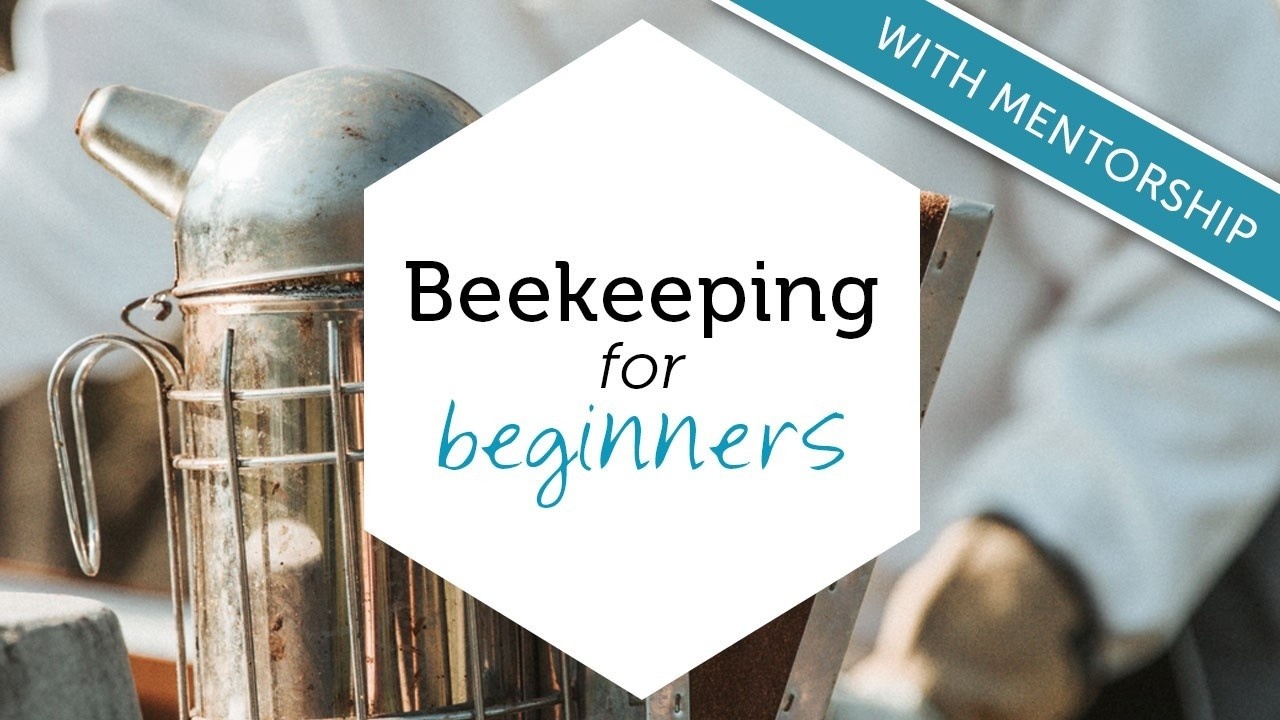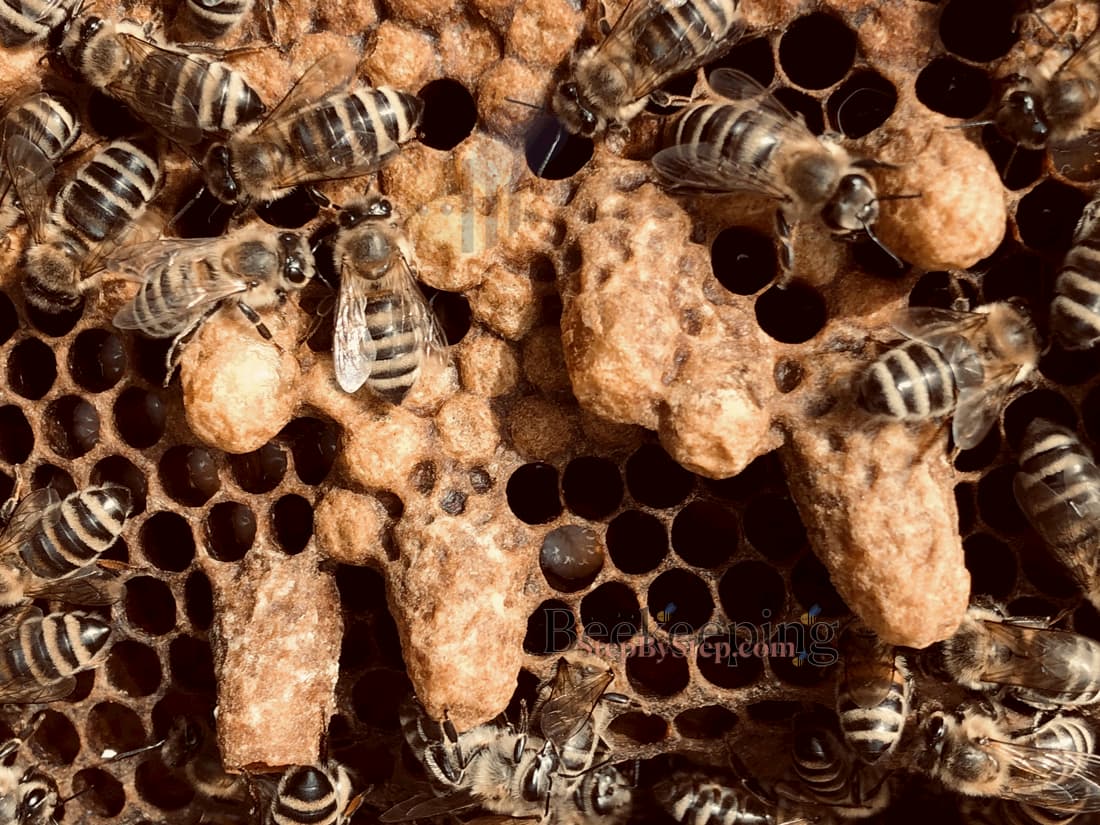Bees make queen cells (new queens) in three cases:
1When the bees decide to replace the old queen with a new one - supersedure queen cells.
2During swarming - swarm queen cells.
3If they lost their queen and they need a new one immediately - emergency queen cells.
Supersedure queen cells
Supersedure queen cells are made when the bees need for some reason to replace the old queen - she is old or hurt or has some other kind of problem and she can’t satisfy the needs of the honey bee colony.
The bees make only a small number of supersedure queen cells, usually only two or even just one.

Supersedure queen cells are of good quality – the bees are focused on a small number of queen cells which they take care of and those larvae get large quantities of royal jelly from the start.
Since there is a small number of queen cells, they can easily slip past the beekeeper, because the bees can cover the cells with their bodies. And when the new queen bee emerges, the bees soon destroy the queen cells. So it is easily possible that the supersedure happens without the beekeeper even noticing it. And if the old queen was marked, it can happen that the beekeeper suddenly notices an unmarked queen.
Even if the beekeeper notices the supersedure queen cells, there is no need for him to do anything - the bees themselves will replace the queen bee which doesn’t suit them with a new one.
The beekeepeer can remove the old queen, destroy the supersedure queen cells and put a new mated queen, if for some reason there is a need for that.
Advertisement :

Beekeeping for Beginners
Everything you need to know!
This is a full beekeeping course for beginners.
Swarm queen cells
Bees make swarm queen cells when they get urge for swarming.
Learn more about swarming - Swarming.
They make a big number of swarm queen cells.
Swarm queen cells are of good quality because the queens were intentionally made and well fed with royal jelly from the start.
Emergency queen cells
If the queen disappears from the beehive – gets squashed, the bees kill her themselves, the beekeeper intentionally removes her from the hive, etc., the bees need to make a new one immediately. In that case they make a great number of emergency queen cells.
Emergency queen cells are lower quality - the bees tend to solve the problem as quickly as they can, so they make queens out of the older larvae (not older than 3 days) which weren't fed abundantly with royal jelly from the very beginning - the first 2,3 days they were developing as worker bees, not as queen bees.

Characteristics of the swarm, emergency and supersedure queen cells
Supersedure queen cells:
1The colony has a mated queen
2Small number of queen cells, usually only one or two
3High quality queen cells
Swarm queen cells:
1The colony has a mated queen
2Great number of queen cells
3High quality queen cells
Emergency queen cells:
1Colony doesn't have a queen
2Great number of queen cells
3Lower quality queen cells
Difference between swarming, emergency and supersedure queen cells
Position of the queen cell - delusion
It is often said that depending on the position of the queen cell, the bees have urge for swarming or are in supersedure. So you can often hear that if the queen cell is on the bottom of the frame - it is a swarm queen cell, and if it is in the middle - it's a supersedure queen cell. This is totally incorrect.
It is true that, bees with the urge for swarming make a lot of queen cells at the bottom of the frame, but they also make them on the sides of the frame and also in the middle of the comb. In addition, supersedure queen cells don't have to be exclusevely in the middle of the honeycomb - the bees make them wherever they want.
You cannot determine whether it is a swarm or supersedure queen cell by the position of the queen cell on the honeycomb.
Also, it is impossible to find two different kinds of queen cells in one hive – the bees can't swarm and replace the queen at the same time.
How than beekeepers differentiate supersedure queen cells from the swarm and emergency queen cells
The easiest way to determine whether it is a supersedure queen cell or not is by the number of queen cells, not by their position:
![]() Emergency and swarm queen cells come in large numbers,
Emergency and swarm queen cells come in large numbers,
![]() Supersedure queen cells are very few - usually only one or two.
Supersedure queen cells are very few - usually only one or two.
Difference between swarm and emergency queen cells
The beginner beekeepers' problem
Differentiation between emergency and swarm queen cells for a beginner beekeeper can be hard - you need some experience for this.
In the process of swarming, the old queen bee reduces laying eggs and may stop in one moment. Because of this it is difficult to determine if the honey bee colony has or doesn't have a mated queen bee - does the colony have an urge for swarming or replacing the old queen.
If there are a lot of queen cells and you saw the queen bee or eggs in the beehive, that is a sign that your bees are getting ready to swarm.
However, sometimes the queen that stopped laying eggs (there are no eggs in the hive) hides between the slats of the frame, on the wall of the hive or the other bees hide her out of sight, so it is difficult to find her (especially if you don't know whether the beehive has a queen or not).
So, how can you differ emergency from the swarm queen cells?
If the honey bee colony has urge for swarming:
![]() The beehive is usually packed with bees,
The beehive is usually packed with bees,
![]() Young bees that don't have anything to do hang in clusters from the lower slats of the frames
Young bees that don't have anything to do hang in clusters from the lower slats of the frames
![]() The queen lays the eggs in the queen caps which are usually located in some neat places such as the lower and side edges of the honeycomb (but keep in mind that they can be in the middle of the honeycomb as well). So the queen cells are mostly located on the rimes of the comb but some of them are in the middle of the frames as well.
The queen lays the eggs in the queen caps which are usually located in some neat places such as the lower and side edges of the honeycomb (but keep in mind that they can be in the middle of the honeycomb as well). So the queen cells are mostly located on the rimes of the comb but some of them are in the middle of the frames as well.
However, emergency queen cells:
![]() Are made out of worker bee cells, out of the larvae that the bee colony chose. Those queen cells are made wherever there is an open young brood (larvae up to 3 days old), so there will be more of them in the middle of the frame and only at the rimes if there is a suitable, young brood there.
Are made out of worker bee cells, out of the larvae that the bee colony chose. Those queen cells are made wherever there is an open young brood (larvae up to 3 days old), so there will be more of them in the middle of the frame and only at the rimes if there is a suitable, young brood there.
If you are not sure what is happening inside the beehive and why are the bees making queen cells, don't panic. With time you will gain experience and detecting problems will get easier. It is perfectly normal to make mistakes and learn from them.
If you choose the wrong option, that's OK - next time you'll do better. Mistakes are part of the learning process. If you can't decide what to do, let the bees do their job and watch what happens, this way you will learn and know how to react the next time similar situation happens.
👉 Help us improve - Give us your feedback 👈
👉 Share this link with someone who may be interested 🔗 beehivetutorials.com/three-kinds-of-queen-cells 👈